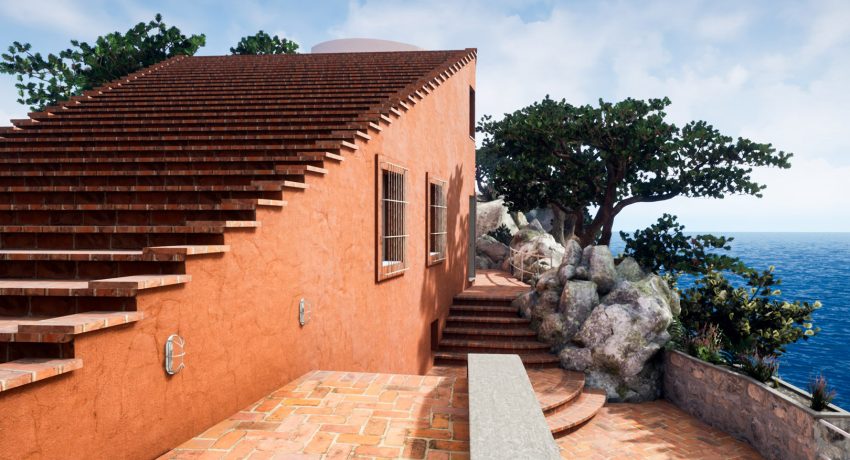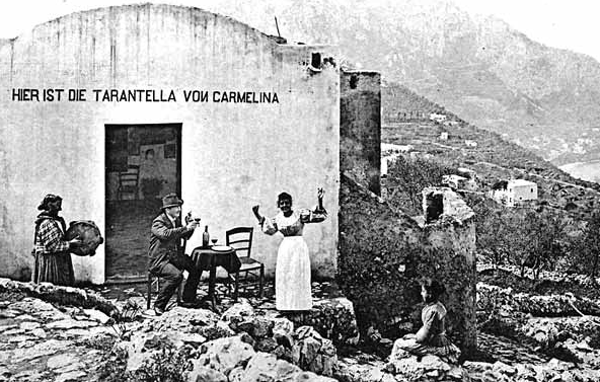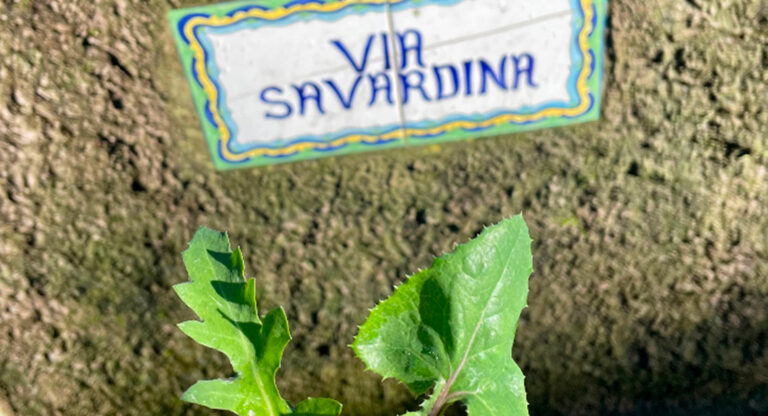

Curzio Malaparte is the pseudonym or stage name of Kurt Erick Suckert born in Prato, Tuscany, in 1898. A man who could, with good reason, be called everything and the opposite of everything. He had been a fascist, having even participated in the March on Rome, and an anti-fascist, a follower of communism, and at the point of death, however, had embraced the Christian religion. A writer, journalist, film director and military man, he described himself as a lover of war, of which, however, he denounced the atrocities in his works “Kaput” and “The Skin.”
In 1936 during one of his travels, Malaparte landed on Capri to meet doctor and friend Axel Munthe, a longtime resident of the island, and was enchanted. Immediately he decided that he wanted to be part of that wild, in some ways inhospitable and still unspoiled nature that found its ideal setting at Capo Massullo, where the writer bought from an islander a plot of land directly overlooking the sea and a short distance from the famous Faraglioni rocks.
And between 1938 and 1942, after obtaining a building permit thanks to the intercession of his friend Galeazzo Ciano, he will build the famous Villa Malaparte or Casa Malaparte or again as he liked to call it “House like me.” A building whose architecture is so essential and rational that it seems the natural continuation of the rock that juts out into the sea or the birth of the island itself, with the physiognomy vaguely resembling that of a ship. Only the red color distinguishes it from the surrounding nature and also from the characteristic white Capri houses.
Many argue that in reality the structure of Villa Malaparte is a figment of the writer’s imagination, who over and over again changed Adalberto Libera’s initial design, making modifications that made it “harsh and strange” as he also liked to define himself.
The interiors of the villa are essential, almost Spartan, with few but studied components such as the majolica tiles that reproduce only one element: “a lyre” taken from a drawing by Goethe. Spectacular, but certainly the result of a thorough study are the windows, each of which overlooks a scenic island glimpse, framed in such a way as to look like an ever-changing, brightly colored painting that changes with the weather and the passing of the hours of the day.
The film world also took notice of this unreal and in some ways insane construction, choosing it as a particular setting for two films: Jean-Luc Godard’s “Contempt,” based on the novel of the same name by Alberto Moravia, and in 1981 we find it in the film “The Skin” based on the autobiographical novel by Malaparte himself, starring Marcello Mastroianni. In more recent times it has also been used as a set for several advertising campaigns.
Upon his death Curzio Malaparte did not betray himself and his philosophy of life, leaving a legacy of “House Like Me“







Yet another, great satisfaction for the Da Tonino restaurant, which since 1993 has been giving

When attending an exhibition, a concert or even a private party, we generally do not

Mobility represents one of the most relevant challenges for modern cities today. There are realities

Preparations are underway for the new edition of That’s Amore Capri, an event that has

The past, present and future of Marina Piccola flow fast, like waves crashing on the

Sitting in the main dining room of La Capannina restaurant, pastel colors reminiscent of the
Power Up Capri-Roma – P.IVA: 09700821219 © 2022. All rights reserved. Design by Power Up Capri